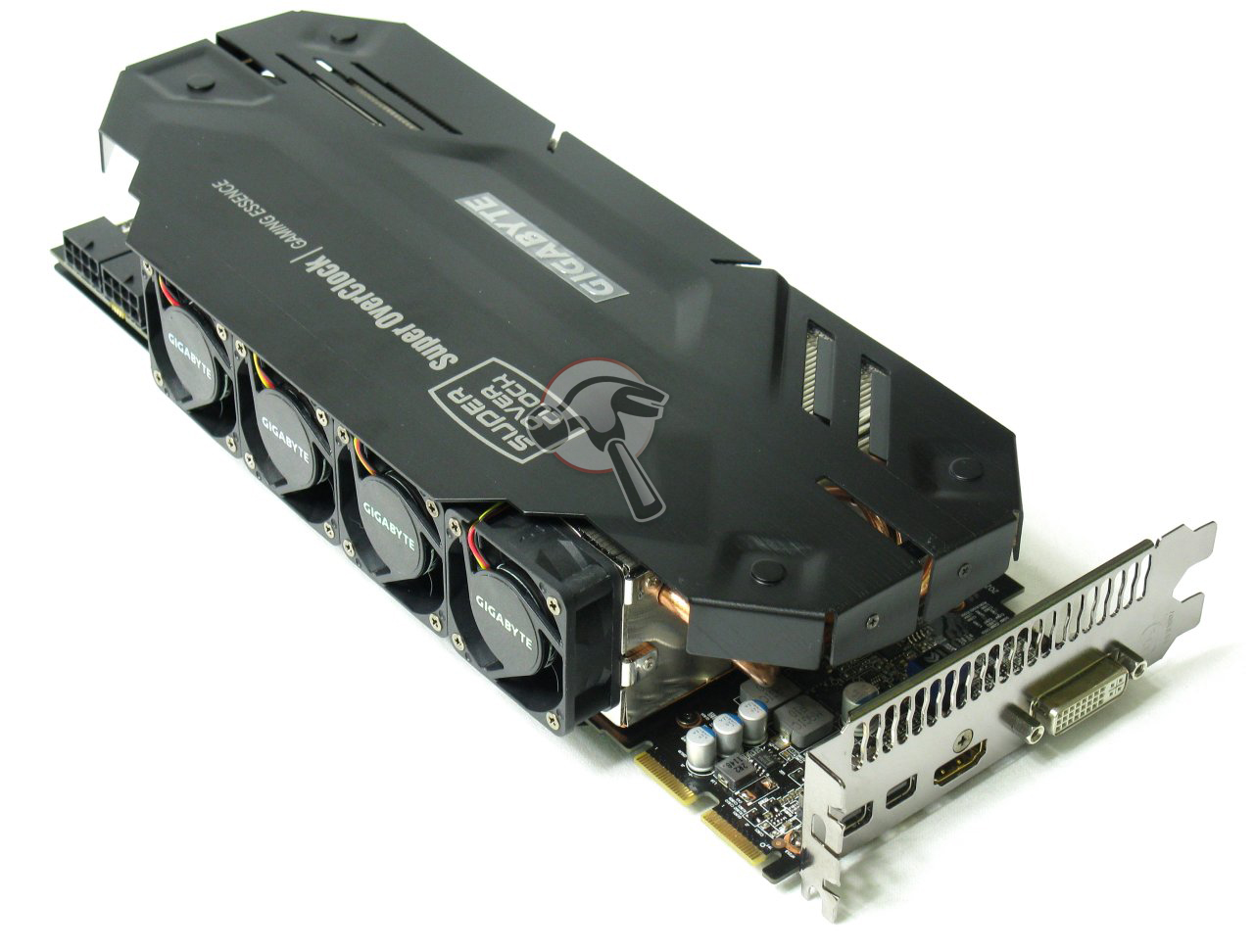First Preview of Gigabyte's Radeon HD 7970 With 5 Fans
Last month at CES, we caught first glimpse that the Gigabyte Super Overclock AMD Radeon HD 7970 with the Windforce 5X cooling system. We've now the chance to take a closer look.
The most immediately noticeable customization with this graphics card is the massive cooler, which Gigabyte boasts uses an "anti-turbulance pull airflow system" that pulls air away from the system. Gigabyte says that if air were pushed inwards, the motherboard will block the flow of air. The cooler also draws air across the card, which the company says is superior to blowing directly towards the heatsink. The cooler is supposed to be quiet too and completely silent when under 30 degrees Celcius. We hope to verify this in our testing.
This impressive cooler allows the Radeon HD 7970 to be clocked to 1080 MHz, up from the standard 925 MHz. Gigabyte points to a 14 percent performance improvement over a stock Radeon HD 7970 when considering the numbers from 3DMark 11 Extreme mode. That cooler has also made things quieter by 9.2 decibels and 18 percent cooler than the stock fan when running full tilt on Futuremark.
This Gigabyte product also features the company's Extreme Dual BIOS technology. One BIOS is the default with standard settings, while the other one is called the LN2 BIOS for extreme overclockers who want to avoid cold bug issues.
We're working on one of these in our labs right now, so stay tuned for our in-depth look at this premium graphics card.
Read more from @MarcusYam on Twitter.
Get Tom's Hardware's best news and in-depth reviews, straight to your inbox.
-
halcyon I'm eager to read more THG news and info on this...especially since its actually not supposed to be too much of a noise-maker.Reply -
Xenturion Something tells me the acoustic characteristics of those 40mm fans will leave much to be desired. But, I suppose we'll have to wait and see.Reply -
halcyon XenturionSomething tells me the acoustic characteristics of those 40mm fans will leave much to be desired. But, I suppose we'll have to wait and see.That's what I'd think but perhaps the fans are using fluid-dynamic bearings and noise-reduction blade geometry (or some other smoke and mirrors gimic). Who knows.Reply -
dj1001 5 x 40mm fans = 200mm of fanageReply
would have been better of doing what everybody else does and use 2 120mm -
vmem I guess results will determine whether the engineer who got this "brilliant idea" will be promoted or fired lol. who knows, it just may be a breakthrough in GPU cooling. we all know large CPU coolers use this same concept and are generally better than the top down style stock coolers. so I'm willing to give it the benefit of the doubt and eagerly await what test results show us :)Reply -
nukemaster doronWhere's the fifth fan?Over the PCI-e power connectors. You can not see it in this picture.Reply
The biggest advantage this may get will be that fact that ALL that space can be a heatsink without some removed for the fans. -
doron nukemasterOver the PCI-e power connectors. You can not see it in this picture.The biggest advantage this may get will be that fact that ALL that space can be a heatsink without some removed for the fans.Reply
This. And Gigabyte's claim for better cooling efficiency actually makes a lot sense, especially with a side-mounted exhaust fan. We'll see though. -
nukemaster Reply
Are you sure?9379336 said:5 x 40mm fans = 200mm of fanage
would have been better of doing what everybody else does and use 2 120mm
40mm fan opening or area
3.14 x 20^2 (pr r^2)
1 x 40mm fan has a opening area of 1256 square mm
1256 x 5 = 6280 square mm
120mm fan area
3.14 x 60^2
1 x 120mm fan is 11304 square mm
This setup is closer to an 80mm fan then anything.
All this does not count the fact that with a 40mm fan the motor is much bigger compared to the blades. So both are actually less then the above numbers. Also, how thick is each fan?
More accurate would be with blade surface area.

